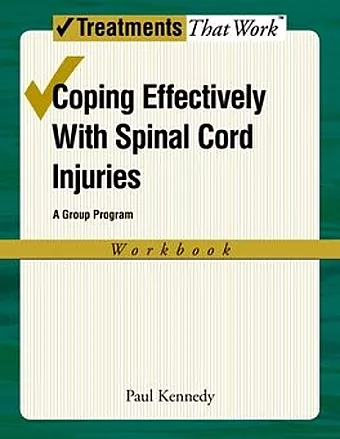Coping Effectively With Spinal Cord Injuries: A Group Program: Workbook
A structured program for coping with spinal cord injuries
Format:Paperback
Publisher:Oxford University Press Inc
Published:27th Nov '08
Currently unavailable, and unfortunately no date known when it will be back

This workbook offers a structured group program to help individuals cope with spinal cord injuries, emphasizing effective coping strategies and community support.
For individuals facing the challenges of a spinal cord injury, understanding how to cope can be daunting. Coping Effectively With Spinal Cord Injuries: A Group Program: Workbook provides essential insights into the impact of coping strategies on mental health and overall well-being. It emphasizes the importance of approach-focused coping, which encourages acceptance and understanding of one's condition, fostering a sense of mastery and self-efficacy. In contrast, avoidance-focused coping can lead to detrimental outcomes, including anxiety, depression, and even substance abuse, making it crucial for individuals to learn effective coping techniques.
The book presents Coping Effectiveness Training (CET) as a structured approach to help individuals enhance their coping skills. CET focuses on identifying both effective and ineffective responses to stress, particularly those that may hinder recovery, such as disengagement and long-term denial. By fostering critical thinking about personal behaviors in response to stressors, Coping Effectively With Spinal Cord Injuries equips participants with the tools to avoid unproductive coping methods and encourages healthier strategies.
Through a series of seven sessions conducted in small groups, participants engage in meaningful discussions and share experiences, which helps combat the isolation often felt after a spinal cord injury. The workbook complements the program with monitoring forms, homework exercises, and practical techniques, ensuring that individuals can continue their growth beyond the therapy sessions. Evidence from clinical studies supports the effectiveness of CET in reducing depression and anxiety, ultimately leading to improved self-perception and resilience in those affected by spinal cord injuries.
ISBN: 9780195339734
Dimensions: 211mm x 272mm x 10mm
Weight: 272g
96 pages